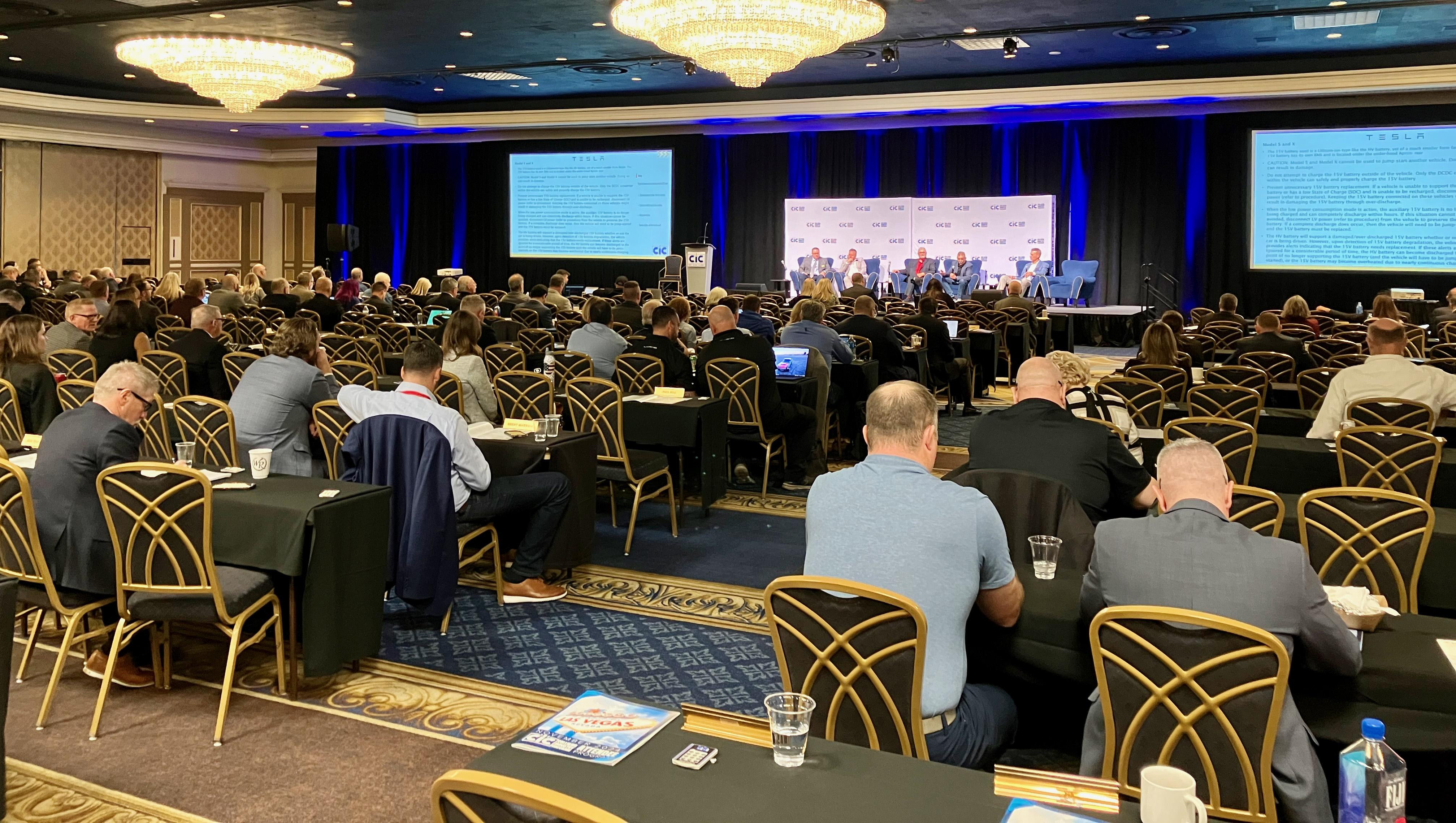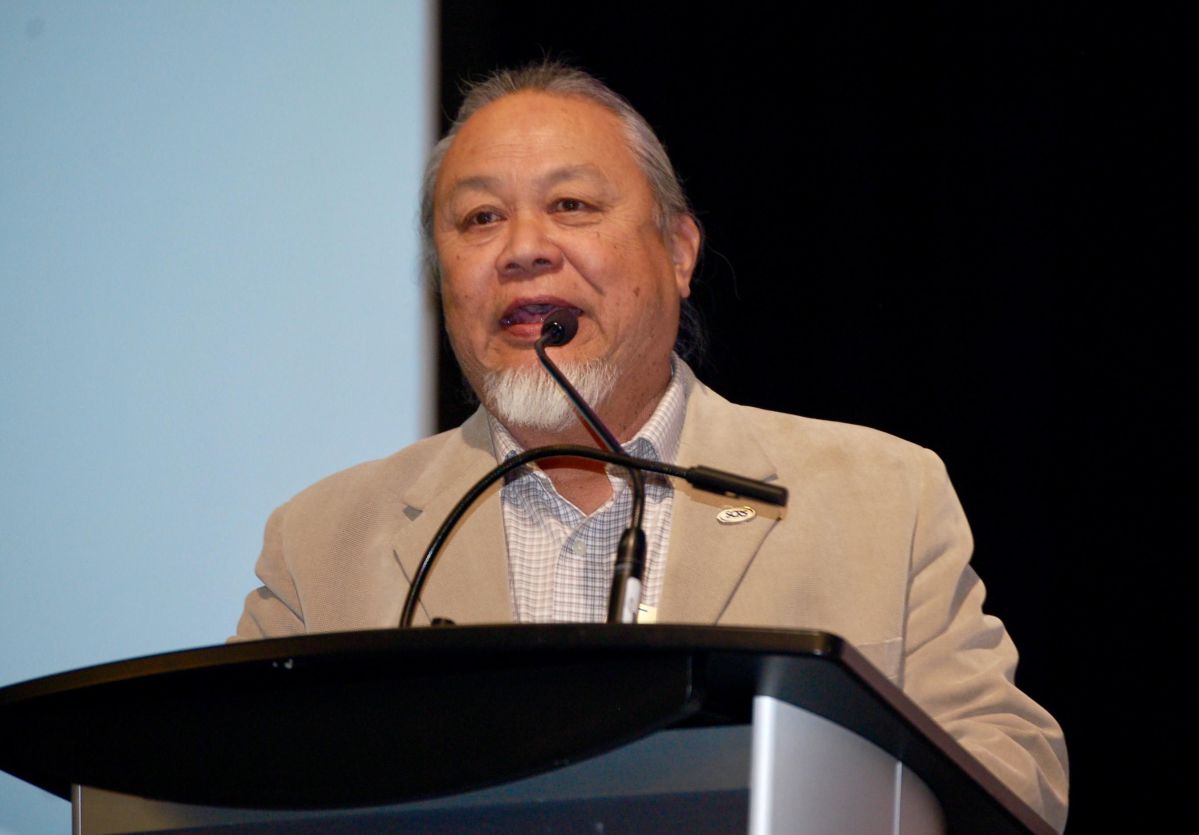With more than 140,000 people, about 1,400 vehicles and more than 2,400 exhibiting companies filling 1.2 million square feet inside and outside the Las Vegas Convention Center, there’s a lot vying for attendees’ attention at the SEMA Show, held Nov. 5-8.
But for collision repairers, there were key meetings and training sessions throughout the event that drew them -- at least temporarily -- from the trade show itself.
The Collision Industry Conference (CIC), for example, regularly holds one of its quarterly meetings during SEMA week, which it did this year on Nov. 5. Cyber protection was the focus of a presentation by the Data Access, Privacy and Security Committee, offering real-world best practices to avoid having digital systems hacked or becoming a victim of ransomware.
Shaughn Kennedy of Spark Underwriters said threat assessment and cyber insurance are among the key steps businesses of all sizes should consider.
“First, you have to realize that most standard business insurance policies out there exclude cyber,” said Kennedy, whose company focuses on the automotive repair industry. “So you actually have to have that coverage added back in through an endorsement or a stand-alone cyber policy.
“People ask me: How much cyber [insurance coverage] do I need? Well, insurance is there to pick the pieces up when something bad happens,” Kennedy continued. “The more important thing is proactively having a cybersecurity expert come in and assess your systems. Then the hardest thing for some people is to actually listen to them because all of a sudden they tell you that you need to spend money.”
 Trent Tinsley, right, moderated a CIC panel discussion on cyber security that included, from left, Shaughn Kennedy of Spark Underwriters and Jim Dye of Body by Cochran.
Trent Tinsley, right, moderated a CIC panel discussion on cyber security that included, from left, Shaughn Kennedy of Spark Underwriters and Jim Dye of Body by Cochran.
Kennedy said he equates it to having your doctor say your cholesterol is high, yet you don’t want to pay a monthly gym fee. “’I feel pretty good and nothing bad has happened yet, so I’ll just do it on my own,’” Kennedy said some people think. “That’s kind of a failure point.”
He said a cybersecurity expert can help identify areas of vulnerability within your company. “A lot of shops don’t realize that all these scan tools they have in the shop are all running on Wi-Fi,” he said. “How many of their employees are running on the same Wi-Fi? How many of them are also on these social media sites or the shopping sites that happen to be controlled by a communist country? That’s where the real risk comes in.
“That’s why I think it’s more important that you have a security expert that comes in, assesses your individual shop, your weaknesses, your strong points, and sets a plan for you, and that you actually listen to them. That’s more important than the insurance itself.”
Kennedy said it’s also important to really understand the cyber policy you buy.
“Your insurance has a lot of fine print about what your obligation is under that contract,” he said. “If it specifically lists certain things, like you agreed that you’d have multi-factor authentication, things like that, and you didn’t do it, then you put yourself in jeopardy where you may actually have a claim denied because you didn’t uphold your part of the contract. And a lot of times people don't go through that policy enough, or your agent doesn’t explain it to you, and then there is a jeopardy there.”
Finding Common Language on Calibrations
Vehicle technology was also among the topics on the agenda at CIC in Las Vegas. The Emerging Technologies Committee continued its discussion -- started at a CIC earlier this year -- of issues related to low voltage control systems, this time focusing on pure battery electric vehicles.
And while developing and maintaining written definitions for the terminology in the industry isn’t always the most compelling content at CIC, the work of the Definitions Committee helps with communication within the industry -- and can be key in negotiations and conflicts within the industry.
At CIC in Vegas, the committee received thumbs-up approval from the body for adopting about 30 definitions related to vehicle safety system calibration terms based on the work of the Society of Automotive Engineers (SAE). Those definitions, for example, differentiate between dynamic and static calibration procedures, define a half dozen different target types and two types of reflectors, and offer examples of what can be included in a “calibration report.”
The definitions will be incorporated into CIC’s existing glossary of industry terms, available at the CIC website. Anyone in the industry can submit suggestions for changes or additions to the definitions included in the glossary.
Moving Away From ‘Set-Up and Measure’
Also during CIC in Las Vegas, California shop owner Kye Yeung, who co-chairs a new Repair Processes and Procedures Committee, said he’s stopped using the term “set-up and measure” within his shop.
“When I opened my business in 1975, a lot of things were handwritten, and I think the terminology ‘set-up and pull’ or ‘set-up and measure’ was just us being lazy,” Yeung said during the committee’s presentation. “It was just a term so we didn’t have to do a lot of writing. And unfortunately that term is still used today, yet they’re two separate operations.”
 Several hundred SEMA attendees spent part of their time in Las Vegas at the Collision Industry Conference.
Several hundred SEMA attendees spent part of their time in Las Vegas at the Collision Industry Conference.
He and the committee then showed how the process and equipment used to anchor, measure and pull vehicles has evolved significantly over decades, looking today nothing like the process -- and the amount of time -- required in the past.
“Traveling around the country visiting shops, one of the things that was disturbing was that frame machines are one of the largest investments that a shop owner makes, yet for some reason, it doesn’t seem to be a profit center in a lot of the shops that I visited,” Yeung said. “The reason I know that is a lot of frame machines are just packed away in the corner with 2 feet of dust on them. I don’t know if they purchased them just to participate in a program, or initially they were sold with the idea that it would do a better repair. But when it came down to get compensated for what was involved to do the repair properly, maybe the technicians felt -- and this is just my opinion -- that maybe they weren’t compensated fairly for whatever this [process] was, and decided that if they had a way around it, they would just do it the way they needed to do it.”
Yeung said that’s why his shop has stopped using the “set-up” term. “It’s been antiquated. It doesn’t really say much. There’s no definition of it what’s really included and what’s not,” Yeung said. “What we do as far as dealing with cars that have structural damage is we ‘mount and calibrate to a frame bench for structural alignment and/or structural parts replacement.’”
As appropriate, he said, they add the term “OEM-approved frame machine.”
The Society of Collision Repair Specialists (SCRS) said earlier this year that it plans to conduct a study of structural set-up and measure, similar to its 2022 study of blend refinish labor times, which helped lead all three estimating systems to reexamine their formulas for that procedure and add more flexibility to their systems related to blending.














John Yoswick